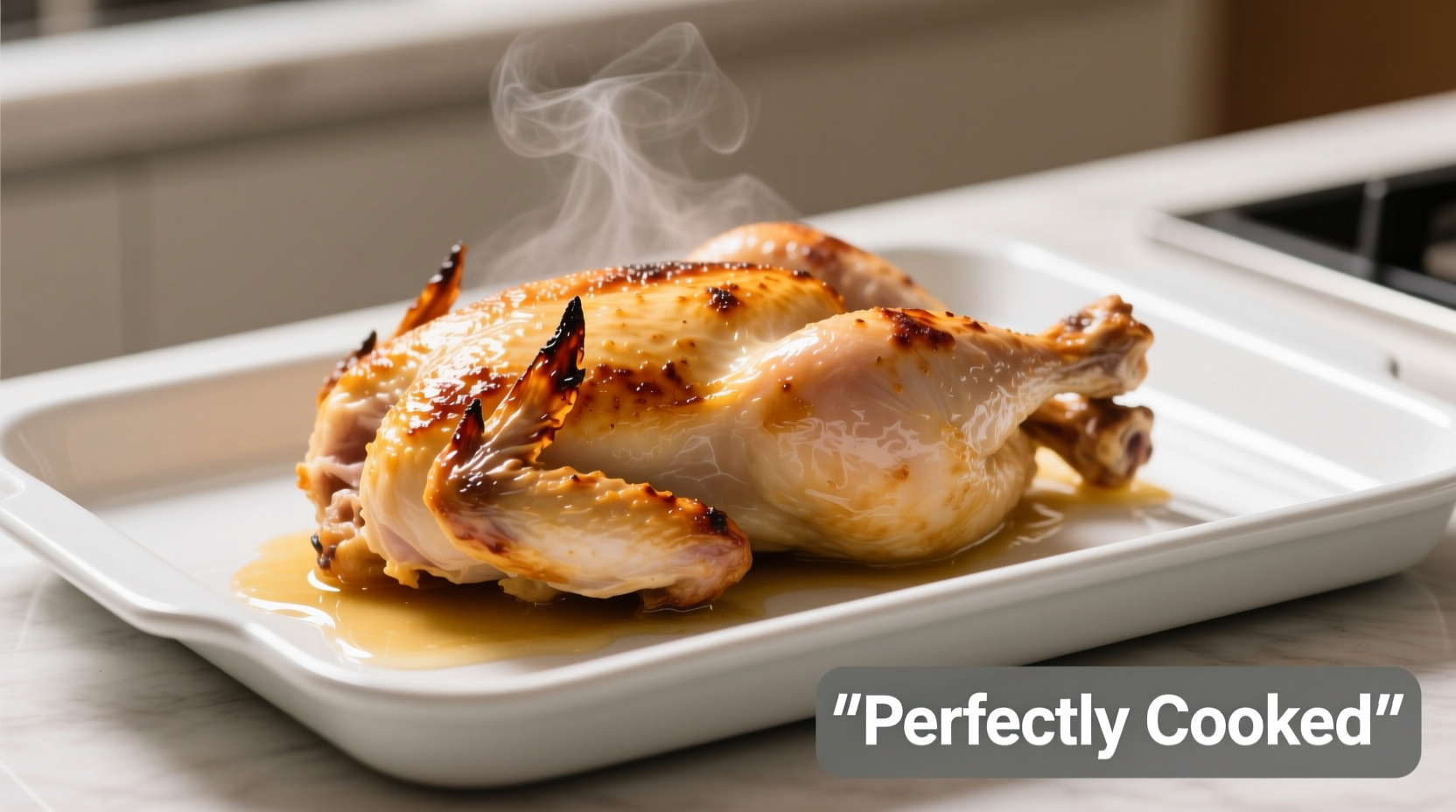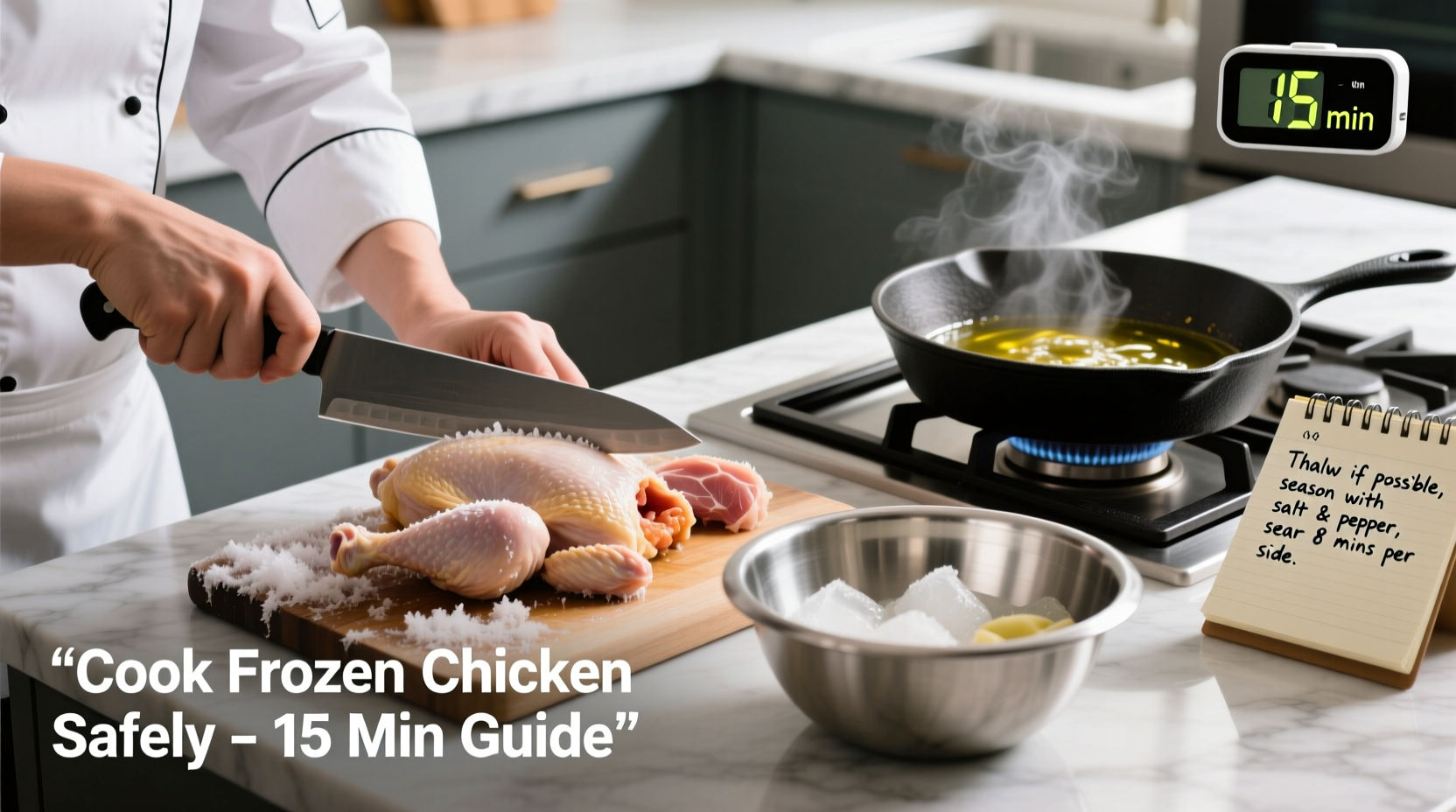You can safely cook frozen chicken by increasing cooking time by 50% and ensuring internal temperature reaches 165°F (73.9°C). The USDA confirms this method prevents foodborne illness when proper temperature guidelines are followed. Oven, stovetop, and slow cooker methods work best for frozen chicken—never deep fry frozen poultry due to oil splatter risks.
Many home cooks wonder whether they can skip the thawing step when time is tight. The good news: cooking frozen chicken is not only possible but can yield juicy results when done correctly. This guide provides science-backed methods that maintain food safety while delivering restaurant-quality results from your freezer to table.
Choosing Your Cooking Method: What Works Best for Frozen Chicken
Not all cooking techniques handle frozen poultry equally. Understanding which methods work—and which to avoid—saves time and prevents kitchen disasters. The USDA Food Safety and Inspection Service confirms that oven baking, stovetop cooking, and slow cooking are safe methods for frozen chicken, while deep frying poses significant safety hazards.
| Cooking Method | Adjusted Time for Frozen Chicken | Best For | Safety Rating |
|---|---|---|---|
| Oven Roasting | 50% longer than thawed | Breasts, thighs, whole chicken | Excellent |
| Stovetop Searing | 25-30% longer than thawed | Thin cuts, diced chicken | Good |
| Slow Cooker | Double cooking time | Shredded dishes, soups | Excellent |
| Air Fryer | 20-30% longer than thawed | Wings, small portions | Good |
| Deep Frying | Not recommended | N/A | Dangerous |
The Oven Method: Foolproof Frozen Chicken Every Time
This is the most reliable technique for cooking frozen chicken breasts or thighs. Preheat your oven to 375°F (190°C) and follow these steps:
- Place frozen chicken in a single layer on a foil-lined baking sheet
- Season generously with salt, pepper, and your favorite spices
- Cook for 45-60 minutes (50% longer than thawed chicken)
- Check internal temperature at thickest part with a food thermometer
- Rest for 5 minutes before serving
According to the USDA Food Safety and Inspection Service, oven temperatures between 350-375°F ensure frozen chicken cooks evenly without drying out. The critical safety checkpoint: your thermometer must read 165°F (73.9°C) in multiple spots.

Stovetop Success: Cooking Frozen Chicken on the Range
For quicker meals, the stovetop method works well with boneless cuts. Professional chefs like Antonio Rodriguez recommend this technique for weeknight dinners:
- Use medium-low heat to allow gradual thawing during cooking
- Cover the pan to trap steam and accelerate thawing
- Add 1-2 tablespoons of oil to prevent sticking
- Cook 30-40 minutes (vs. 20-25 for thawed chicken)
- Flip pieces every 10 minutes for even cooking
The CDC Food Safety guidelines emphasize that partially cooked chicken should never be returned to the freezer. If you can't finish cooking, refrigerate immediately and complete cooking within 24 hours.
Critical Safety Timeline: Temperature Progression for Frozen Chicken
Understanding how frozen chicken thaws and cooks internally prevents dangerous undercooking. This timeline shows what happens during proper cooking:
- 0-10 minutes: Surface begins to thaw while interior remains frozen
- 10-20 minutes: Outer layers reach 100°F (37.8°C) - danger zone begins
- 20-30 minutes: Temperature rises through danger zone (40-140°F)
- 30-45 minutes: Internal temperature reaches 165°F (safe zone)
- 45+ minutes: Carryover cooking continues during resting period
The USDA emphasizes that the danger zone (40-140°F) requires special attention with frozen chicken. Extended time in this range increases bacterial growth risk, making precise timing crucial.
When NOT to Cook Frozen Chicken: Critical Boundaries
Certain situations make cooking frozen chicken unsafe regardless of method:
- Deep frying: Causes dangerous oil splatters as ice meets hot oil
- Grilling: Creates uneven cooking with raw centers and burnt exteriors
- Large cuts: Whole chickens or bone-in pieces over 1.5 lbs won't cook through safely
- Pre-marinated: Sauce ingredients may contain bacteria that thrive during slow thawing
Food safety expert Dr. Mindy Brashears, former USDA Under Secretary for Food Safety, states: "Cooking frozen chicken requires patience. Rushing the process by increasing temperature creates a false sense of security while leaving dangerous cold spots inside the meat."
Troubleshooting Common Frozen Chicken Problems
Even with proper technique, issues can arise. Here's how to fix them:
Dry or Tough Chicken
Solution: Baste with broth during cooking or use a marinade with acid (lemon juice, vinegar) to tenderize. The extended cooking time dries out meat faster—adding moisture halfway through helps.
Uneven Cooking
Solution: Rotate baking sheet or stir pieces every 15 minutes. For stovetop cooking, arrange thicker pieces toward the pan's outer edge where heat concentrates.
Undercooked Centers
Solution: If thermometer shows under 160°F, cover tightly with foil and continue cooking in 5-minute increments. Never slice into chicken to check—this releases juices and dries out the meat.
Pro Tips for Perfect Frozen Chicken Every Time
Professional chefs use these techniques to elevate frozen chicken results:
- Brine before cooking: Soak frozen chicken in saltwater (1/4 cup salt per quart water) for 30 minutes to improve moisture retention
- Butter baste: Add cold butter pats during final cooking stage for rich flavor and moisture
- Rest properly: Let cooked chicken rest 5-10 minutes—this allows residual heat to finish cooking while redistributing juices
- Check multiple spots: Insert thermometer in thickest part and near bone to verify complete cooking
Remember that cooking frozen chicken requires approximately 1.5 times longer than thawed chicken across all methods. The FoodSafety.gov guidelines confirm this extended timeframe is essential for food safety.
Frequently Asked Questions
Can I cook frozen chicken in a slow cooker? Yes, but you must double the cooking time and ensure the slow cooker reaches 140°F within 2 hours. The USDA recommends starting on high heat for the first hour when cooking frozen poultry.
Does cooking frozen chicken affect flavor? Properly cooked frozen chicken tastes identical to thawed chicken when seasoned well. The key is avoiding overcooking, which dries out the meat regardless of starting temperature.
How do I know when frozen chicken is fully cooked? Use an instant-read thermometer—the internal temperature must reach 165°F (73.9°C) in multiple spots. Visual cues like clear juices and white meat are unreliable for frozen chicken.
Can I season frozen chicken before cooking? Absolutely—in fact, seasoning frozen chicken helps flavor penetrate during the extended cooking time. Dry rubs work better than wet marinades, which can create steam pockets.
What's the fastest safe method for cooking frozen chicken? The air fryer method (375°F for 25-35 minutes) provides the quickest results while maintaining safety. Always preheat your air fryer and flip pieces halfway through cooking.











 浙公网安备
33010002000092号
浙公网安备
33010002000092号 浙B2-20120091-4
浙B2-20120091-4